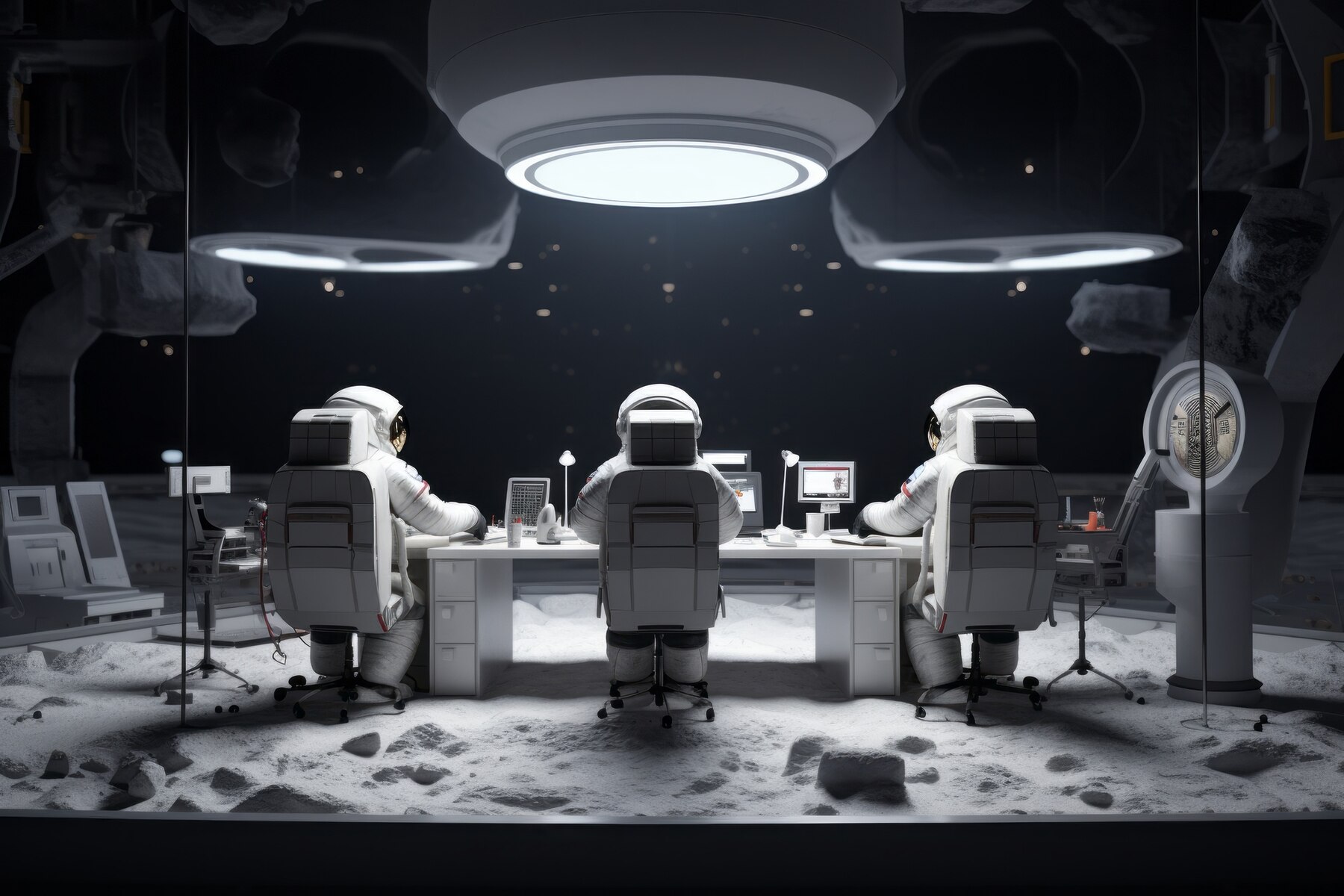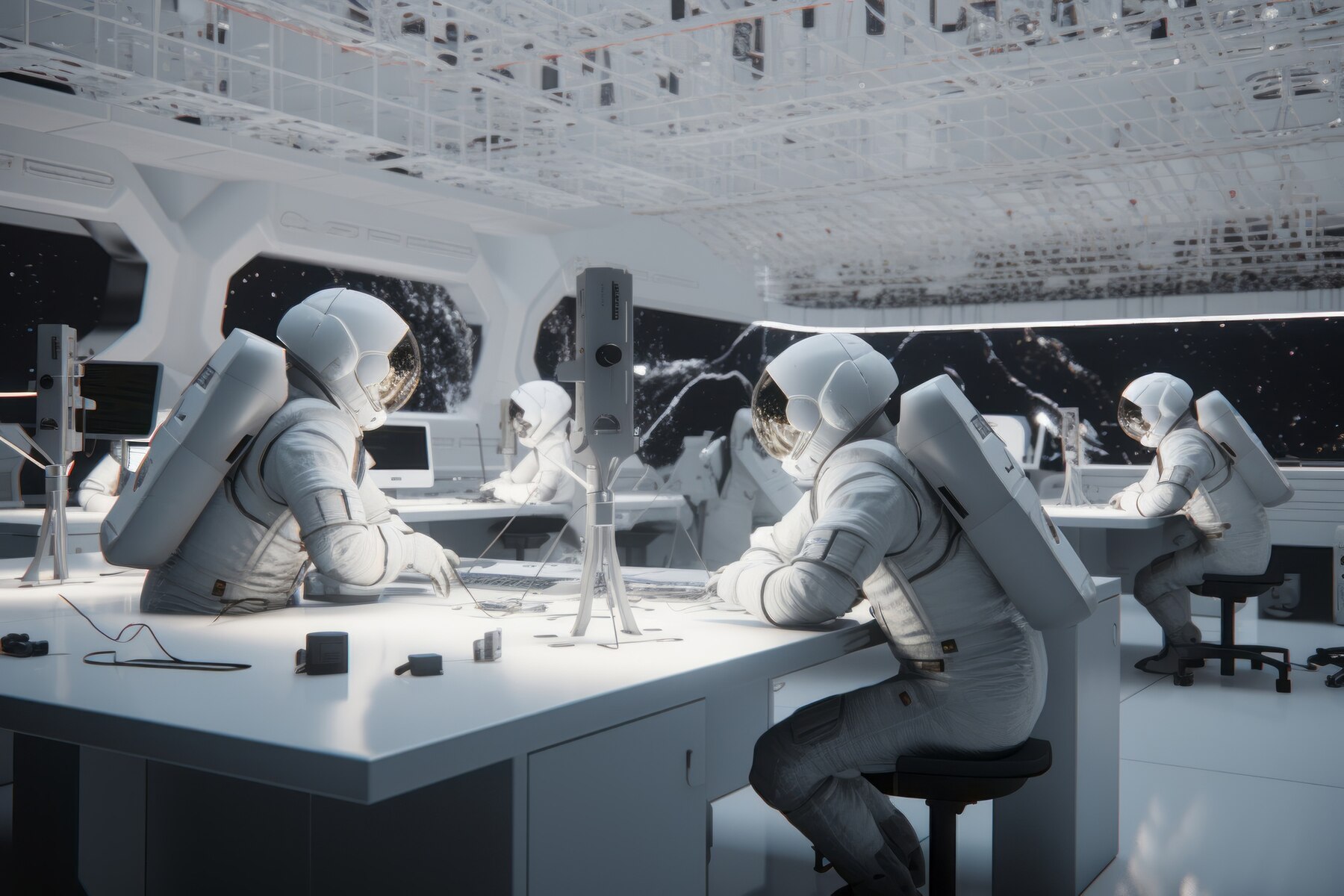
How Robots are Being Used in Space Exploration
The pursuit of space exploration has always stretched the bounds of technology, with robots at the forefront of such endeavours. They help out astronauts and scout far-away planets, rewriting our understanding of the universe.
AgileSpace has developed a real-time Optical Communication System that enables AI-powered space missions like NASA, ESA, and SpaceX. These robotic systems are the key. But how are they used? What are the most sophisticated space robots, and what future innovations are in store?
Space exploration robotics limits humans in space. This blog will highlight new projects, space robotics challenges, and their implications for future interplanetary missions.

The Role of Robots in Space Exploration
Why Are Robots Essential for Space Missions?
Sending humans into space is costly and risky. It requires complex life-support systems. In contrast, space robotics offers many advantages:
- Withstands Harsh Environments – Robots survive extreme temperatures, radiation, and pressure.
- Reduces Mission Costs – No need for food, water, or oxygen lowers expenses.
- Robots Can Go Where Humans Can’t – They explore places like Mars and the frozen oceans of Europe.
- Increases Mission Duration – Robots can work for years or decades without returning to Earth.
AI-powered missions are key for deep-space exploration, studying planets, and maintaining satellites.
Types of Space Robotics and Their Applications
Rovers: Exploring Planetary Surfaces
Rovers are robots that move on planets. They collect data and run experiments. Notable NASA robots in space include:
Perseverance (Mars 2020 Mission)
- Landed on Mars in 2021 to search for ancient life.
- Features AI navigation and can drill and collect rock samples.
- Carries the Ingenuity helicopter, the first aerial vehicle to fly on another planet.
Curiosity (Mars Science Laboratory)
- Active since 2012, studying Martian climate and geology.
- Its findings suggest Mars once had liquid water, hinting at past life.
These rovers provide vital insights into Mars, helping scientists assess future human colonisation.
Humanoid Robots: Assisting Astronauts
Though less common, humanoid robots are increasingly crucial in space missions.
Robonaut 2 (R2)
- Developed by NASA and General Motors.
- Designed to assist astronauts on the International Space Station (ISS) with maintenance tasks.
- Its dexterous hands allow it to operate tools and spacecraft controls.
Humanoid robots might help astronauts during EVAs. This support could lower risks in risky tasks.
AI-Powered Autonomous Spacecraft
Autonomous robotic spacecraft explore deep space without human input.
Voyager 1 & 2
- Launched in 1977, they are still operational today.
- Voyager 1 is the farthest human-made object from Earth, now travelling through interstellar space.
- These probes send valuable data about cosmic radiation and magnetic fields.
OSIRIS-REx
- Successfully collected samples from asteroid Bennu in 2023.
- Helped scientists learn about the solar system’s origins and asteroid mining.
Autonomous spacecraft use AI and machine learning to navigate, analyse data, and make real-time decisions.
Robotic Arms and Maintenance Bots
Space stations and satellites need repairs often. Robotic arms are key for maintenance.
Canadarm2
- A robotic arm on the ISS that captures and docks spacecraft.
- Assists with repair missions and helps astronauts during spacewalks.
Dextre
- A robotic handyman performing delicate repairs on satellites.
- Reduces the need for human spacewalks, making maintenance safer and more efficient.
AI-powered space missions are advancing. Robotic arms can now operate independently, self-repair, and handle tasks independently.
Swarm Robotics: The Future of Space Exploration
Instead of relying on one robot, scientists are developing robot swarms—groups of tiny robots that work together.
NASA’s PUFFER Bots
- Small, foldable robots designed to explore extreme terrains like caves and ice sheets.
- It can be deployed in large numbers to cover vast areas efficiently.
Swarm robotics could be key to exploring moons like Europa and Enceladus, where liquid oceans lie beneath icy surfaces.
Challenges in Space Robotics
Despite their advantages, space robotics face several challenges:
- Extreme Environments – Robots must endure intense radiation, temperature shifts, and low gravity.
- Communication Delays – Signals can take minutes or hours to reach, complicating real-time control.
- Power Supply – Limited energy sources, with solar panels sometimes ineffective in deep space.
- Autonomous Decision-Making – Robots must make quick decisions without human input, requiring advanced AI.
Overcoming these challenges is key to creating next-gen robotic explorers for harsh environments.
Future of Space Robotics
AI and Machine Learning in Space Exploration
As AI evolves, future space robots will be:
- More autonomous – Capable of making independent decisions in deep space.
- Self-repairing – Using AI to detect and fix malfunctions.
- More interactive – Robots will better communicate with humans and adapt to new tasks.
Lunar and Martian Colonization
NASA’s Artemis program plans to return humans to the Moon by 2025, with robots playing a key role.
- Lunar Rovers will assist astronauts in building permanent Moon bases.
- Mars Robotic Missions will prepare for human settlement.
Mining Asteroids for Resources
Asteroid mining might transform space exploration. It can supply essential materials such as water, metals, and fuel.
- Companies like Asteroid Mining Corporation are developing robotic mining technologies.
- AI-powered mining bots could extract resources, reducing the need for supplies from Earth.
With these innovations, robots will expand our reach beyond Earth, paving the way for interplanetary travel.

Robots in Space: Paving the Way for Future Exploration
It is not you who has stepped into death. They enable us to see distant planets, assist astronauts, and conduct deep-space research. Robots like Perseverance and spacecraft like Voyager demonstrate how robotics is developing the future. This ends up being a future where, beyond Earth, humans and AI work in concert.
AI-led missions will evolve robots into the mainstays of lunar bases, Martian colonies, and asteroid mining. They will enable us to achieve new heights in space exploration.
Are we on the verge of a robotic space revolution? Only time will tell. But one thing is sure: the future of space exploration will be driven by advanced robotics and AI. What do you think about the role of robots in space? Share your thoughts in the comments!


